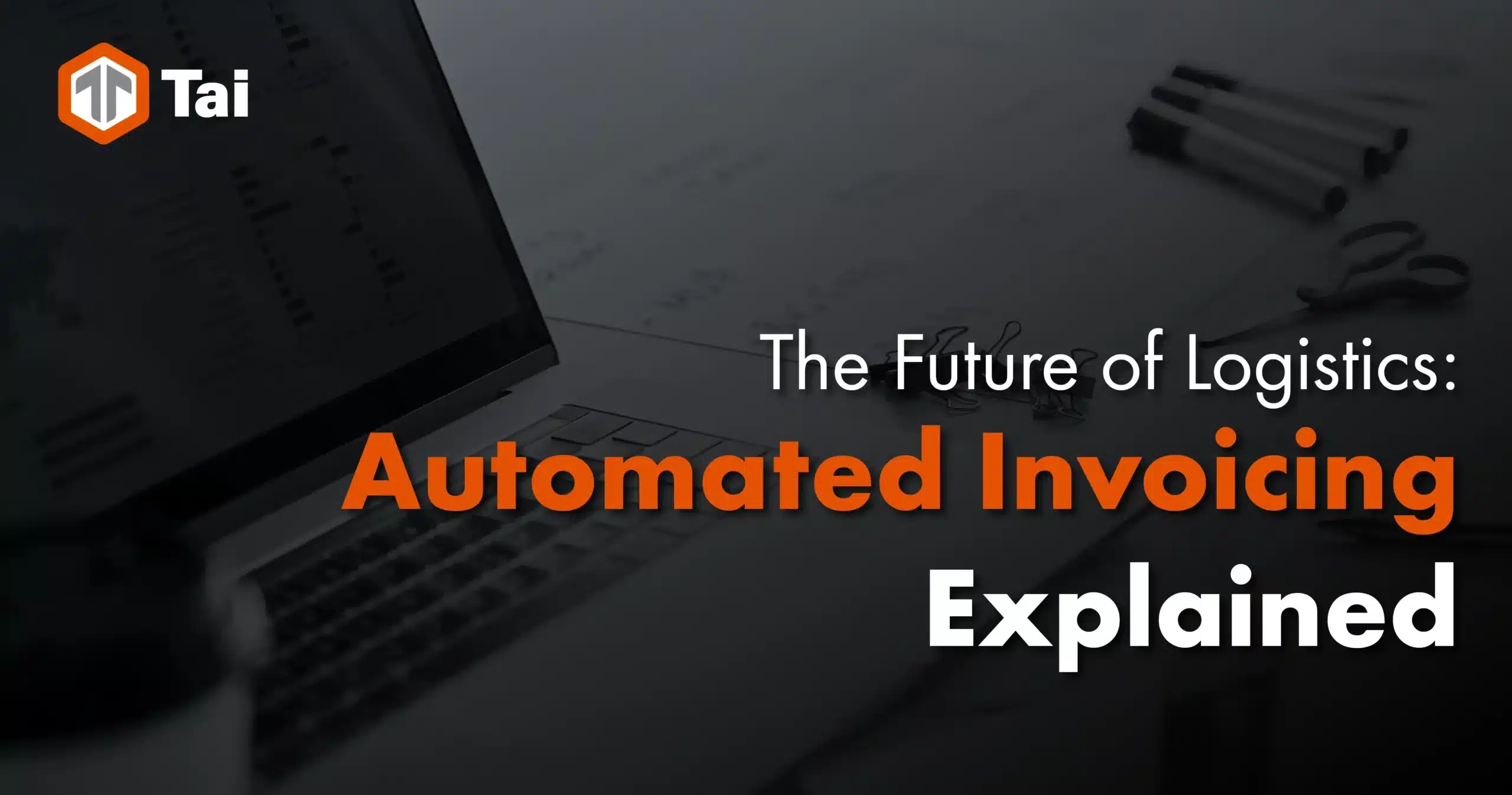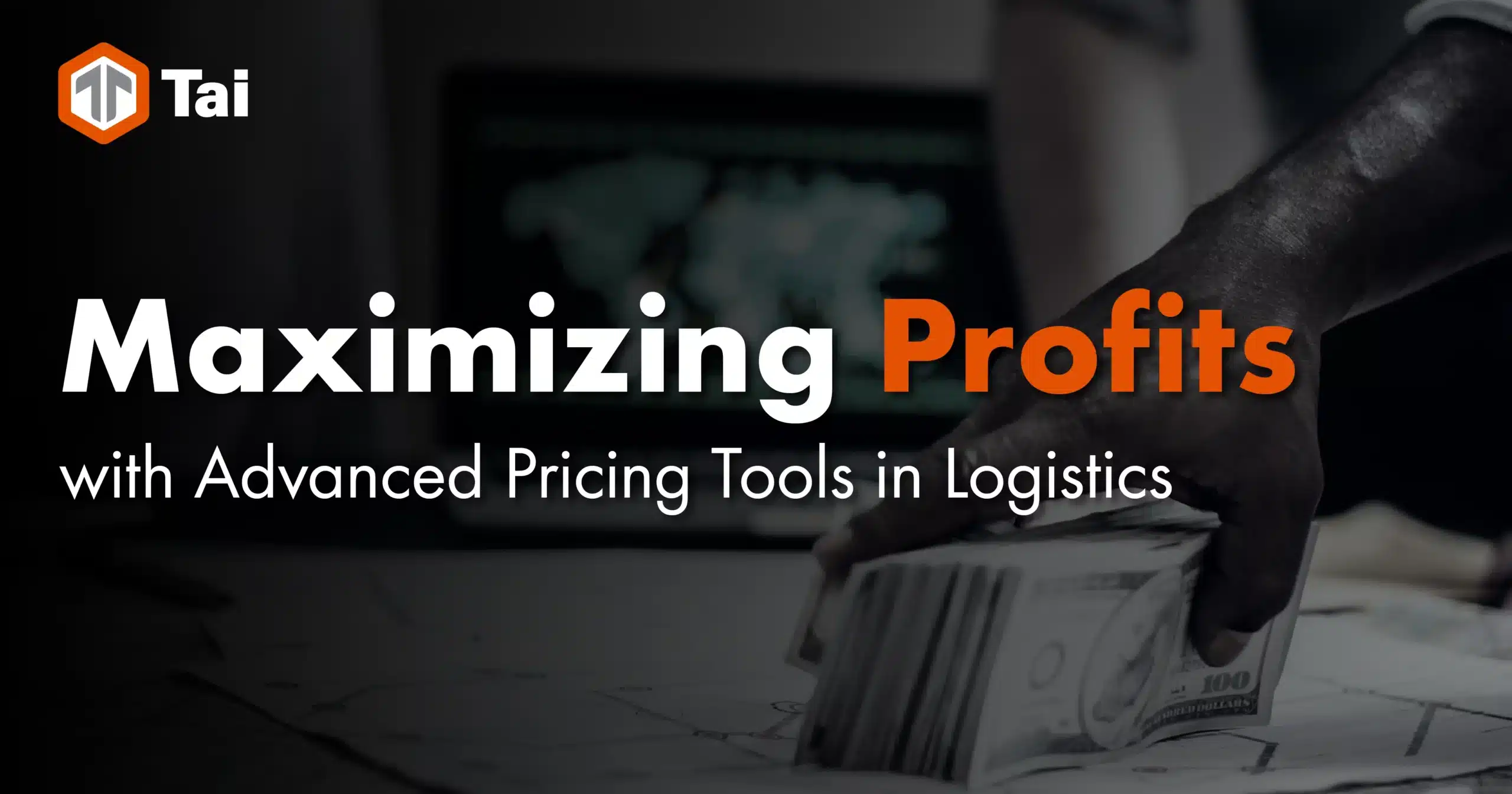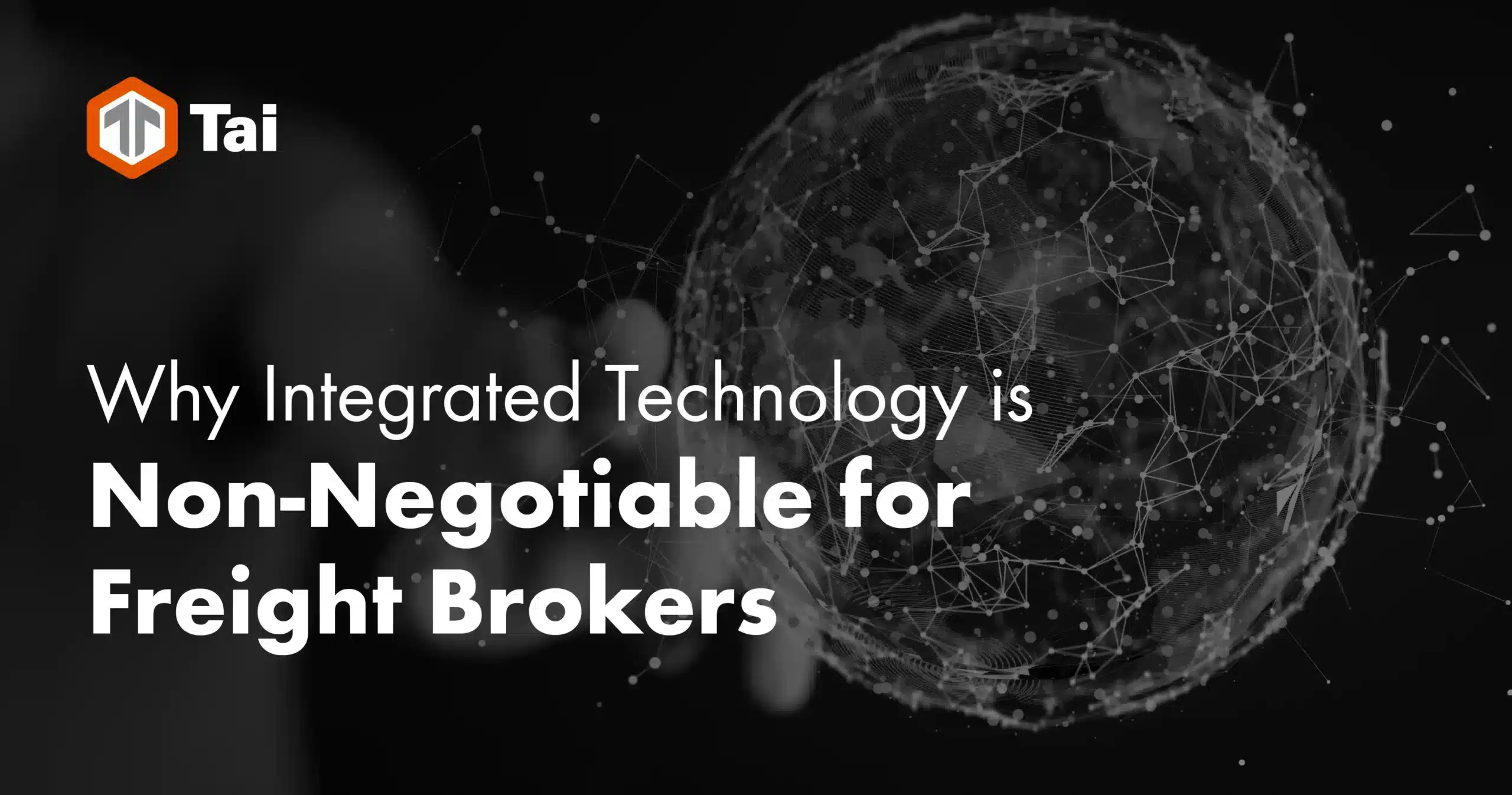In business, few phrases are more dangerous than: “We’ve always done it that way.”
It may sound like stability, but it often signals resistance to change. In today’s freight market, where margins are tight and competition is fierce, sticking with the status quo could be holding you back.
Think about it: What if Henry Ford, Steve Jobs, or Jeff Bezos had followed that logic? Business growth doesn’t happen by repeating old patterns. It occurs when you objectively challenge them.
If you’re still using a legacy TMS, it’s time to ask: Is this system helping us grow, or is it just familiar?
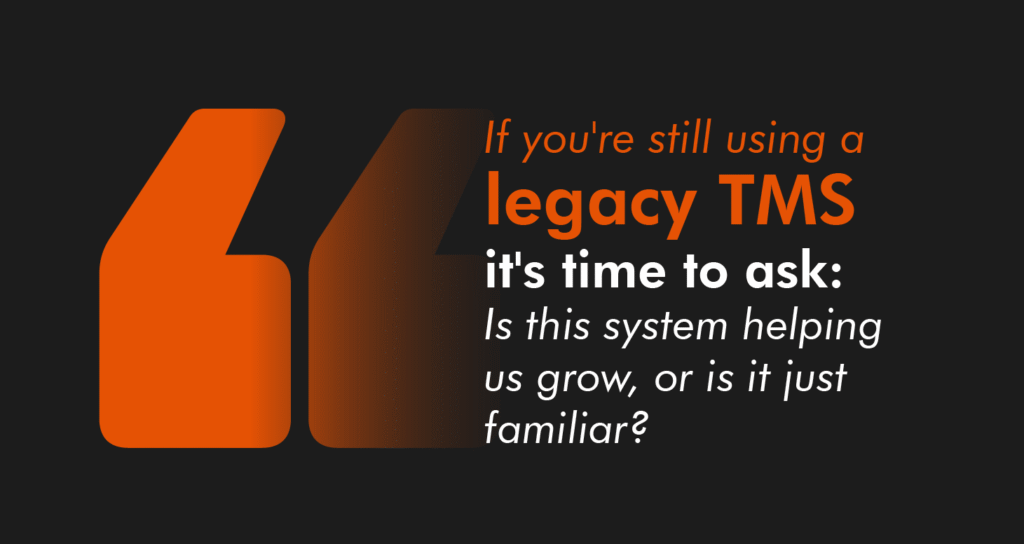
Why Legacy Systems Hold Brokers Back
A TMS that worked five or ten years ago may no longer meet today’s demands. The current freight environment demands speed, automation, and adaptability, especially for growing brokers. Legacy systems, particularly those not specifically designed for brokerages, were never intended to support this level of complexity. That can be very bad for business.
Here’s what sticking with a legacy TMS often leads to:
- Resistance to change: Fear of disruption keeps your team locked into inefficient workflows.
- Stagnation: Innovation and business growth stall because your system can’t evolve.
- Loss of competitive edge: Competitors with broker-focused tools quote faster, win more loads, and retain more customers.
- Missed opportunities: Without seamless integrations, usable automation, and real-time visibility, your team spends more time managing the system than moving freight
How to Move Forward (Without the Guesswork)
No one is saying change is easy. But it’s necessary. Here’s how to approach it with purpose:
- Start by asking "why": Why are you hanging on to your legacy TMS? Why does your team do things a certain way? Are your daily processes truly effective, or are they just familiar?
- Acknowledge what works. Then ask what’s next: Respect the systems that got you here, but don’t let them define where you're going. Is there a better alternative?
- Focus on value: Don’t change just for the sake of change. Look for systems that help your team quote faster, reduce errors, and improve service.
- Build a culture that welcomes better ideas: Innovation thrives in teams that ask questions and explore smarter ways of working. Encourage your team to give their feedback on your legacy TMS and on what they’ve heard about other systems.
These suggestions will help you adopt the right mindset to objectively analyze your current business and consider new opportunities to build your business.
Ask These Questions About Your Current TMS
No one is saying that change is easy. But it is necessary. If you’re feeling like your business is stuck in neutral, start by doing an honest audit of your legacy TMS. Ask yourself:
- Was it built for brokers or adapted from something else?
- Can we set up automated workflows without calling IT?
- How many manual steps or workarounds do we still rely on?
- Does it integrate with load boards, accounting tools, and carrier networks?
- Is it easy to use, or do new hires take weeks to get comfortable?
- Do we get fast support and real training for team members?
- Is pricing predictable, or do costs rise every time we make a change?
- Is our TMS provider a partner or just another vendor?
If your answers to any of these questions raise concerns, it’s time to consider a different type of TMS. Your future may depend on it.
What Brokers Need in 2025
Top brokers will invest in new tech this year for two strategic reasons: To reduce costs and boost productivity and scale quickly when the market rebounds
In short, they’re using this time to strengthen operations instead of waiting for better conditions. If you want to do the same, you need a digital solution that understands how brokers work.
Your TMS Is Your Foundational Operating System
It’s time to shift your thinking about your TMS. To be successful in today’s market, you need more than a disjointed database or multiple dispatch screens. You need a TMS that serves as your operating system, one that unifies quoting, booking, tracking, document handling, carrier communication, and billing in a single, integrated platform.
Legacy TMS platforms are designed to support a wide range of companies, including shippers, carriers, and brokers. Making it challenging to use as a one-stop-shop operating system without substantial and costly customization.
Why Legacy TMS Falls Short
Generic or outdated TMS platforms often lack the following:
- Broker-specific workflows for LTL and FTL
- Simple automation for quoting, tracking, status updates, auditing, and invoicing
- Easy integrations with essential tools
- Real-time visibility across shipments and teams
- Scalable support, training, and pricing
- Flexibility to match your unique business model
You shouldn’t have to change how your business operates to fit your TMS. The right TMS should fit your business.
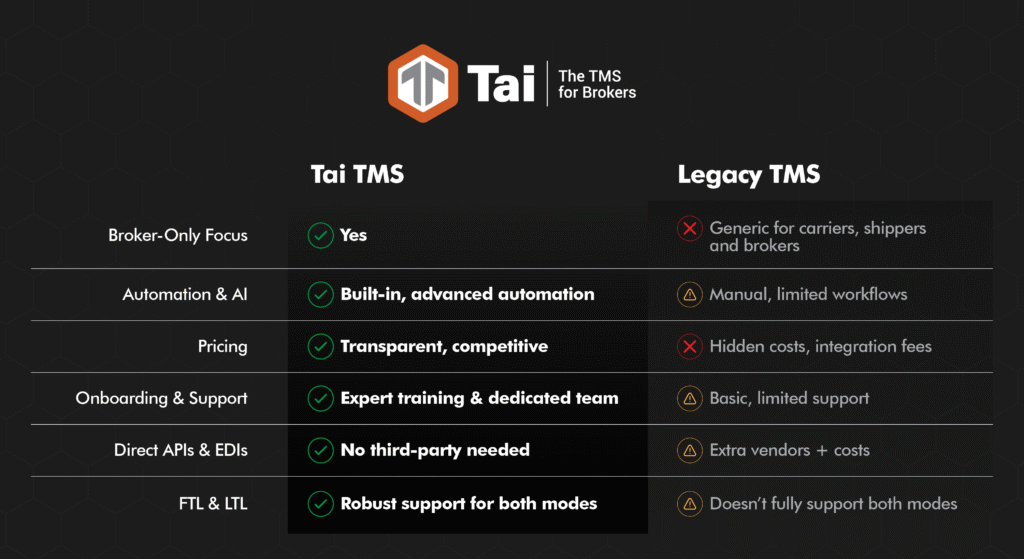
Tai TMS: Built for Brokers Who Are Ready to Grow
Tai was built from the ground up for freight brokers, not for shippers, not for carriers, and not for yesterday’s logistics world. With Tai, you get no-code automation, seamless integrations, real-time data, and flat-rate pricing. It’s the tech foundation you need to grow smarter and faster.
Ready to move on from “how it’s always been done”? Download our free guide “Turn Market Pressure Into a Strategic Advantage” and see what’s possible with the right TMS.
